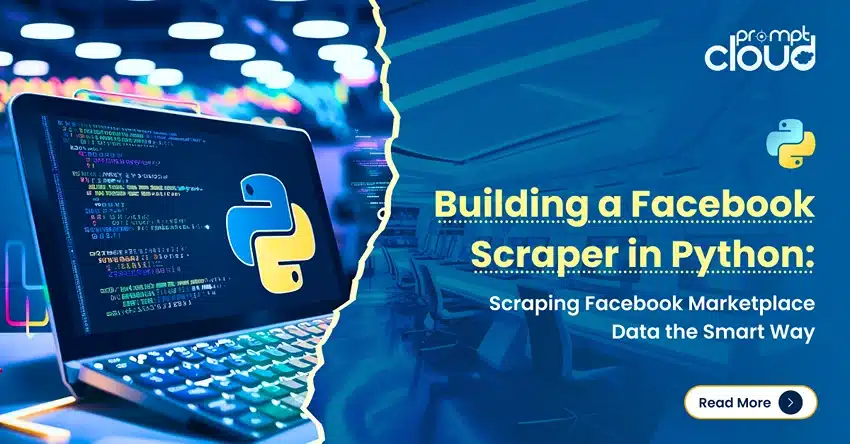
The web is a massive data source, where terabytes of data get added every single day, and older data keeps getting updated. Machine Learning requires web scraping data from different websites to make accurate decision-making for companies and research. No wonder, it remains one of the best data sources for Machine Learning (ML) based algorithms. However, there lies a complex process between the data on the web and your machine learning algorithms. This is what we will be discussing today.
Web Scraping Data for Machine Learning:
If you are going to scrape data for machine learning, ensure you have checked the below points before you go about the data extraction.
Data Format:
Machine learning models can only run on data that is in a tabular or table-like format. Hence scraping unstructured data will, in turn, require more time for processing the data before it can be used
Data List:
Since the main objective is machine learning, once you have the websites or webpages that you plan to scrape, you need to make a list of the data points or data sources that you are aiming to scrape from each webpage. If the case is such that a lot of data points are missing for each webpage, then you will need to scale down and select data points that are mostly present. The reason behind this is that too many NA or empty values will decrease the performance and accuracy of the machine learning (ML) model that you train and test on the data.
Flag Issues:
If you are creating a continuous data flow where the data will be scraped and updated in the system 24 by 7.-You will need to make sure that there are alarms in place to monitor when and where the scraping algorithm breaks. This can be due to multiple reasons — Website owners are changing the U, a webpage has a separate structure from others on the same website. The breaks need to be handled manually. With time, your code will grow to handle multiple scenarios and diverse websites that you need data from.
Data Labelling:
Data labeling can be a headache. But if you can gather required metadata while data scraping and store it as a separate data point, it will benefit the next stages in the data lifecycle
Cleaning, Preparing and Storing the Data
While this step may look simple, it is often one of the most complicated and time-consuming steps. This is due to a simple reason — not one process fits all. Depending on the data that you have scraped, and where you have scraped it from. You will need specific techniques to clean the data.
First, you will need to go through the data manually to understand what impurities lie in the data sources. You can do this using a library like Pandas (available in Python). Once your analysis is done, you will need to write a script to remove the imperfections in data sources and normalize the data points that are not in line with the others. You would then perform important checks to validate whether the data points have all the data in a single data type. A column that is supposed to hold numbers cannot have a string of data. For example, one that is supposed to hold data in dd/mm/yyyy format cannot hold data in any other format. Other than these format checks, missing values, null values, and anything else that might break the processing of the data, needs to be identified and fixed.
Web Scraping Data Fields:
When it comes to data fields that can have one of ‘n’ values (For example, say you have a gender column that can hold one of m, f or o, or a senior citizen column that can hold a binary value such as True or False). You need to convert these values to numbers. Where the values are binary, you can convert them to 1 or 0. Where there are n options you can use values from 0 to n. For values that are massive, say you have a field where values are in millions of rupees, you can scale it down to just the 1- 3 digits signifying the number of millions. These types of operations help data processing later and help you create more efficient models.
Data Storage Issues:
Data storage can be an entire problem statement in itself. Depending on data format and access frequency by business systems. You can store data in the most price-efficient cloud data storage service available to you. For tabular data, where every row has almost the same number of data points. You can use something like an Aurora PostgreSQL instance, a relational database deployed in the cloud. The NoSQL option, where you have every single row with varying data points. One of the best options is Dynamo Db, a managed database by AWS. For large quantities of heavy data like files and images that you need to store and access very occasionally. You can use S3 containers, which offer a cheap object storage service. You can create folders in an S3 bucket and use it for storing data just like you would use a folder in your local system.
Machine Learning Libraries and Algorithms
One of the most popular languages in which data science and machine learning coding are done today is Python. It offers multiple third-party libraries that are heavily used to build machine learning (ML) models. The most common ones are Scikit-Learn and TensorFlow which can be used to build models from data in tabular format by writing a single line of code. If you are already aware of which algorithm you want to use. Such as CNN or Random forest or K-means, you can also specify that in your code. You need not know or understand the inner workings and the math behind each algorithm to implement it in code form.
Traditional ML algorithms did not perform better when the amount of data at hand rose exponentially. This was not a problem since traditional data sets did not have the size that would create an impact anyway. But the rise of web scraping along with big data from sources like IoT devices. It has helped fuel the use of neural networks that perform like other algorithms when the data set is of a small size. As the size increases, performance benefits compared to traditional algorithms are seen.
What’s Next For Web Scraping?
The web is an endless source of information and will remain a vital data source for testing multiple machine learning algorithms. In fact, as the size of data increases, we will have to come up with newer algorithms that can process the data faster. Since today we have ML models that take a month to build. Hopefully, the near future will have ML models that benefit from larger datasets. And they are able to provide better predictions.
PromptCloud is a fully-managed web scraping service provider, catering to the big data requirements of enterprises and start-ups alike. If you liked the content please leave us your valuable feedback in the comments section below.



















